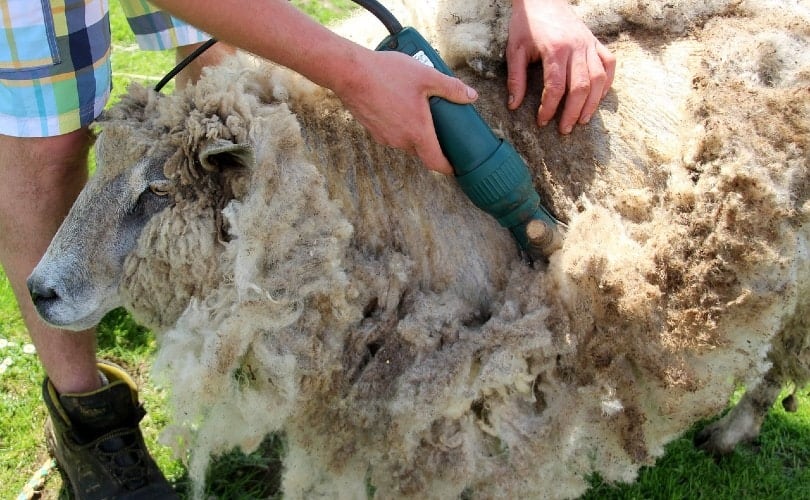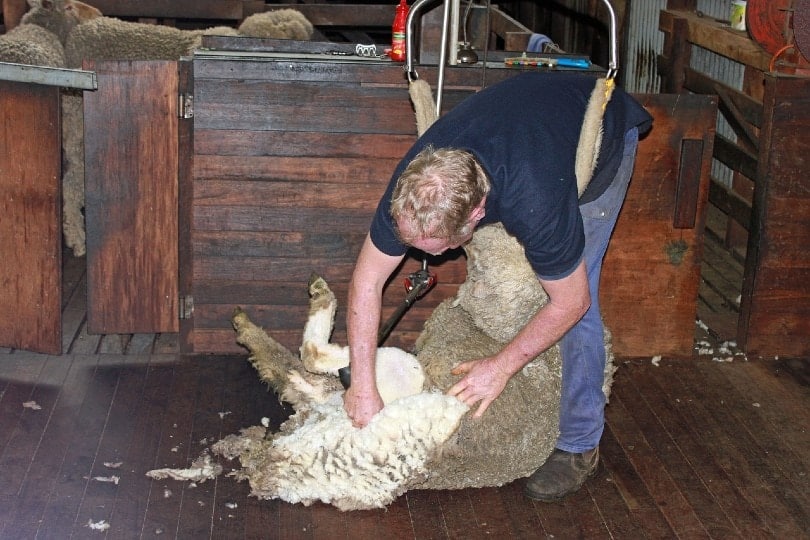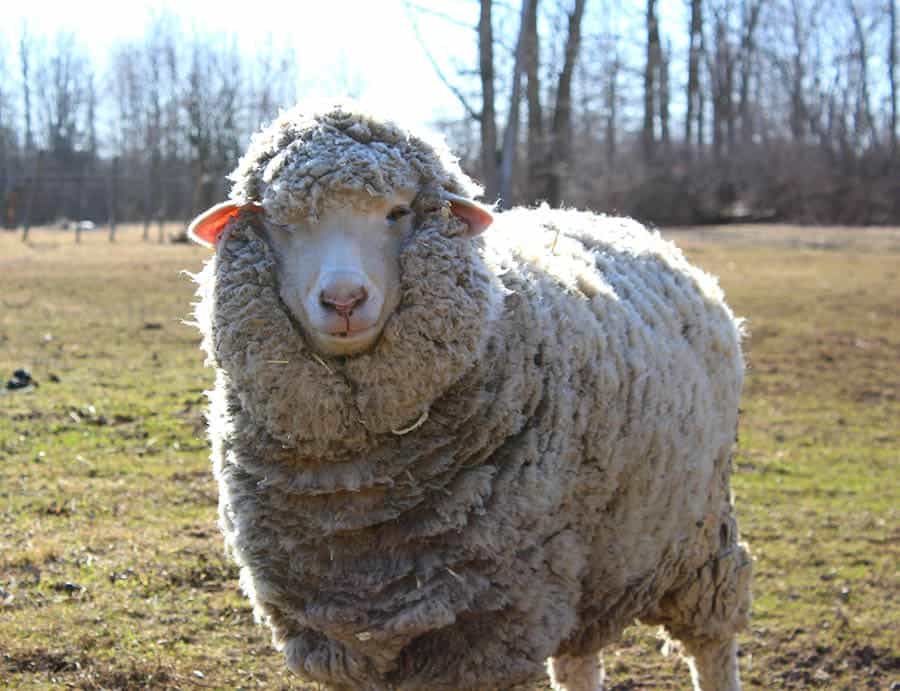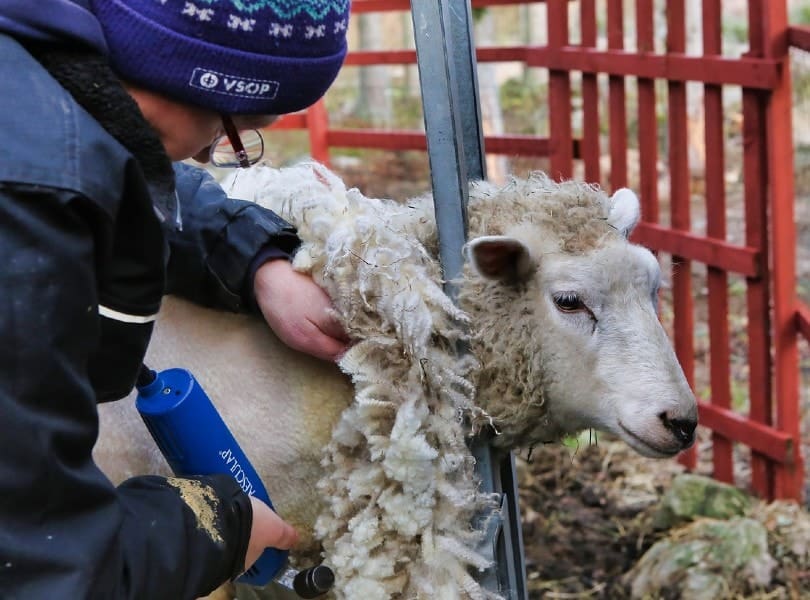As a farmer or avid lover of sheep, you may be wondering if it is necessary to shear your sheep. You may be faced with the decision of whether you should sheer your sheep or if you can let their wool grow out as it would in the wild.
Shearing your sheep has many benefits, but also some cons that you may want to consider before making your final decision. Fortunately, the benefits greatly outweigh the negatives, which is why sheep shearing is so necessary and recommended.
In this article we will go in-depth on the topic of sheep shearing and whether it is necessary, ethical, and why you should or should not sheer your sheep.

Shearing Sheep – A Scientific Overview
Domesticated sheep have been shorn for thousands of years (around 11,000 to 13,000 years ago), which makes this a common practice for many sheep owners.
If you are new to the world of sheep, then you may be unfamiliar with the term ‘shearing’. Shearing means that you cut or shave off the wool of your sheep in chunks. This act requires skill and precision, especially if you want to avoid accidentally nicking and injuring your sheep during the shearing process.
Not only can shearing be a timely process if you have a large flock of sheep, but it can also be daunting work that requires you to get close to your sheep and use strength to hold them up to get all the chunks of wool that grows around their body. However, once you get the hang of shearing, it will go faster and much easier than before.
Most sheep farmers will use electric shearing or special sheering machines to cleanly remove a sheep’s wool and some sheep owners who have fewer sheep on their property will generally sheer by hand with scissors and hand blades or hire a professional to shear their sheep.

Shearing Cycles
Sheep are primarily sheared once a year before lambing or spring begins. They are born in all seasons and the wool management routine will depend on the climate and whether the sheep has produced enough wool for shearing to be necessary. Sheep’s wool continually grows and can get quite uncomfortable during the hotter seasons where the wool acts as an insulator and traps in heat. This is the main reason many sheep owners will opt to sheer their sheep, regardless of if they are profiting through the wool market or rather making life easier for their sheep.
Furthermore, an official statement from the American Society of Animal Science Board directors states that shearing in sheep should be practiced for the health and hygiene of each sheep. Since sheep are unable to naturally shed, their wool may become too thick and unruly, which leads to several problems to occur.
- Sheep with thick and overgrown wool can become immobilized by objects which can cause them to become trapped and put them at risk of predatory attacks.
- Trapped urine, debris, and feces in the wool will attract flies, maggots, and other pests that cause irritation and infections and put your sheep at risk.
- Excess wool impedes the sheep’s ability to regulate their body temperatures which can lead to overheating and dehydration in sheep, and eventually death in your sheep.
With this information, we can begin the understand the basic reasons as to why sheep should be sheered, and what the authorities have to say about this common practice.
Should You Sheer Your Sheep? How Often & Why?
It is in your sheep’s best interest to shear them. But you may be questioning that if it is such a recommended practice in the sheep community, then how do wild sheep deal with not being sheared at all? Well, wild sheep have different circumstances than domesticated sheep. Sheep did not always need to be sheared, and people have bred sheep to produce excess wool during the domestication period.
Some breeds of wild sheep such as the Katahdin will naturally shed their coarse winter coats by scratching their bodies against trees to rub away excess fluff as the conditions begin to warm up.

Domestic Sheep Must Be Sheared
Domesticated sheep do not have these same self-maintenance abilities and rely heavily on their owners for survival. It is possible that sheep can die if they are not sheared, and excess heavy wool reduces their ability to thrive.
To further prove that sheep must be sheared at least every 12 months, many farmers and sheep lovers can guarantee that it is not inhumane or harmful to shear your sheep, but it is rather more detrimental to let your sheep suffer from excess wool that only grows to such an extent from human intervention. Selective breeding makes it essential that your sheep must be shorn, and in the wild, their wool will not grow so densely.
- Prevent build-up of manure, urine, and dirt that could otherwise lead to a bacterial or parasitic infection.
- Create a clean environment for newborn lambs.
- Allow room for wool regrowth.
- Improve the sheep’s ability to control their body temperature in hot conditions
- Harvest the wool fibers for commercial purposes.
- Reduce the risk of insects and pests burrowing in the wool.
- Helps prevent sheep from being attacked by predators if they get stuck in a tight area.
- Prevents matting and tangling.
- The lamb can easily seek warmth and bodily contact from its mother after birth.
Can Sheep Grow Out Their Wool?
It is not necessarily ‘bad’ for sheep to grow out their wool, but it does negatively impact the survival rate of domesticated sheep, particularly during summertime when the sheep have no escape from the uncomfortably warm conditions. Shearing is a welfare matter, and the decision is entirely up to the owner.
If you do decide to let your sheep’s wool grow thick and dense throughout the colder months, then there is a reduced risk of temperature complications; however, other cons such as matting, hygiene, infection, and predatory factors still stand. But, if you do not shear a sheep with excess wool as the temperature warms up, you will face potentially lethargic sheep that are suffering from heat stress.

Do Sheep Shed Their Wool?
Rarely, a domesticated sheep’s wool will naturally be removed, however, there are some instances where branches have ripped at sheep’s wool and removed some chunks, but this is not a guaranteed nor reliable method of wool maintenance.
The wool can also become very heavy and uncomfortable, reducing your sheep’s ability to move properly or get comfortable. Think of shearing as taking off a large, thick, and heavy winter coat as it starts to warm up and how light and cool you will feel once the weight has been lifted off.
Is It Painful To Shear Sheep?
Shearing your sheep requires respect, caution, calm handling, precision, and first aid knowledge if any injuries do occur during the shearing process. If done right, shearing has barely any complications and a few nicks and cuts can easily be treated by professionals to minimize the risk of infection. Professional sheep farmers and shearers have extensive knowledge in shearing and do not want the animal to suffer.
On a reassuring note, it is not painful for sheep to be sheared. The belief that sheep are in pain during sheering has more to do with their emotional behavior, than the actual physical discomfort they are feeling. Sheep that are new to being sheared may fear the machine or handling process, but do not feel any pain from the shearing and removal of their fleece. It is the same as getting a haircut or shaving your body hair, there are no nerve endings that are harmed in the process which would otherwise induce pain.
What To Do If Your Sheep Appear Stressed Out By Shearing
If you feel that your sheep are suffering emotionally from the shearing process, perhaps because it is taking a long time or you are struggling to control a heavy sheep by yourself, then we recommended reaching out to a professional shearer or farmer and their workers for help. This will make the shearing process much easier for both you and your sheep, especially if you have a large flock. Soon your sheep will lose the fear of being sheared, and then they will rarely show signs of distress when being handled and sheared. Always ensure that the environment is calm, quiet and that each sheep is handled with care. Shear the wool smoothly and use clean and proper sheep shearing blades and machines to reduce the risk of superficial cuts. Keeping the machines, environment, and grooming tools clean and sanitized will lower the risk of infection if your sheep is accidentally nicked.
The RSPCA believes that shearers can reduce the stress your sheep may experience by:
- Creating an environment in the shearing shed where sheep are not mistreated, so that the sheep are not in a state of stress before the shearing process begins.
- Ensuring that the right training programs incorporate principles of animal welfare, handling, and stockmanship.
- Requiring the shearers to be accredited. Meaning the shearers should be professional, experienced, and trained correctly to have the ability to humanely sheer sheep.
- Ensuring the appropriate treatment of wounds and injuries and using veterinarian-approved pain relief where required.
- Handling the sheep in a low-stress manner.
Related Read: How Do Sheep Survive In The Wild? What You Need To Know!

Final Thoughts
There are so many valuable reasons why sheep should be sheared annually or when necessary. From hygiene benefits to comfort, temperature regulation, and health status, the benefits are endless and necessary. In conclusion, it is better to shear your sheep and more ethical than to not shear them and let them suffer underneath an endless pile of wool. If done correctly, shearing is quick, painless, and convenient and your sheep will feel so much better tackling the elements during the warmer months. But don’t worry, if you like the appearance of fully wooled sheep, your sheep’s wool will grow quickly and in better condition than before.
We hope this article has helped you understand why sheep must be sheared and how you can make an informed decision based on what is best for your sheep.
Featured Image Credit: reijotelaranta, Pixabay
